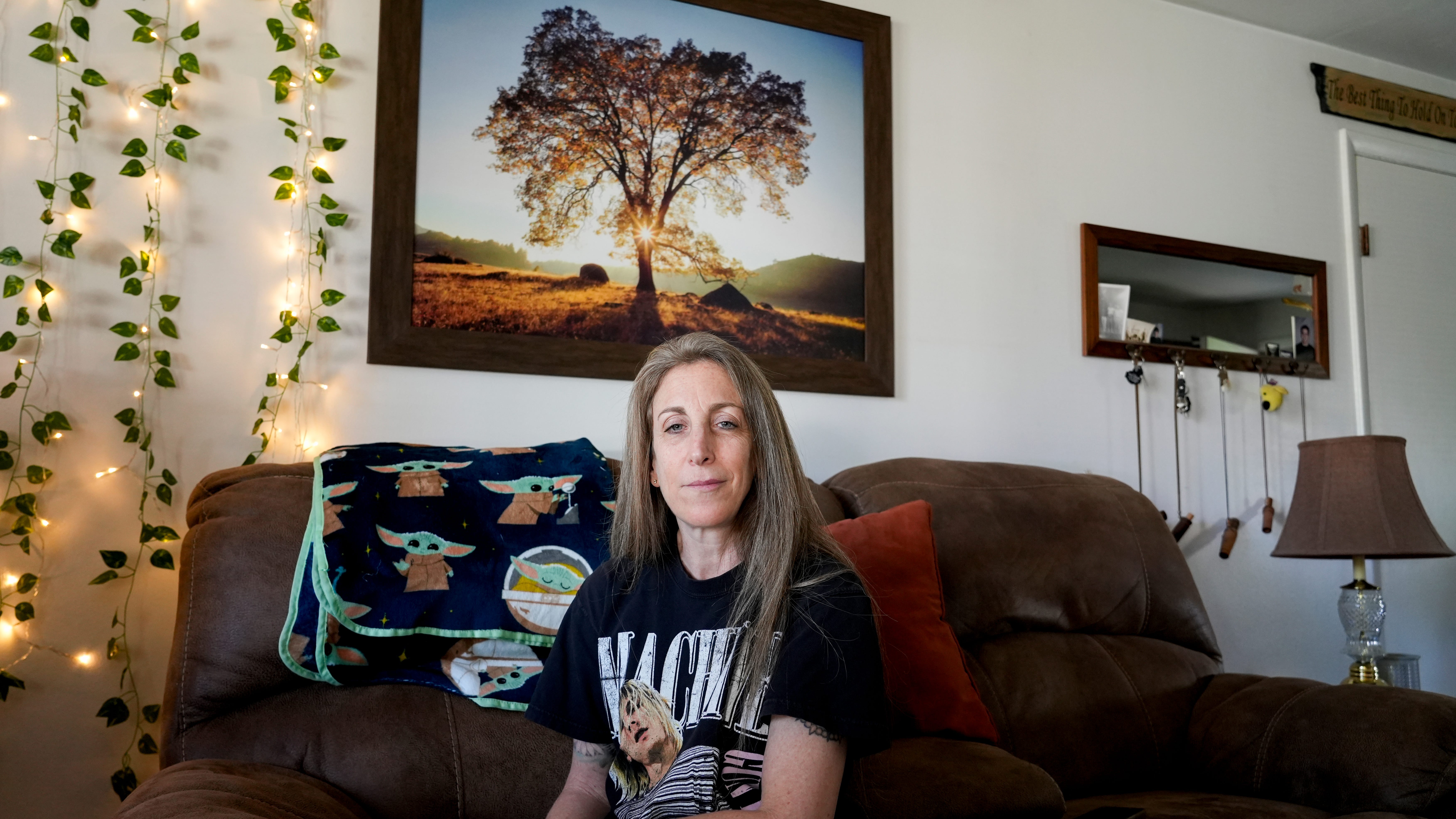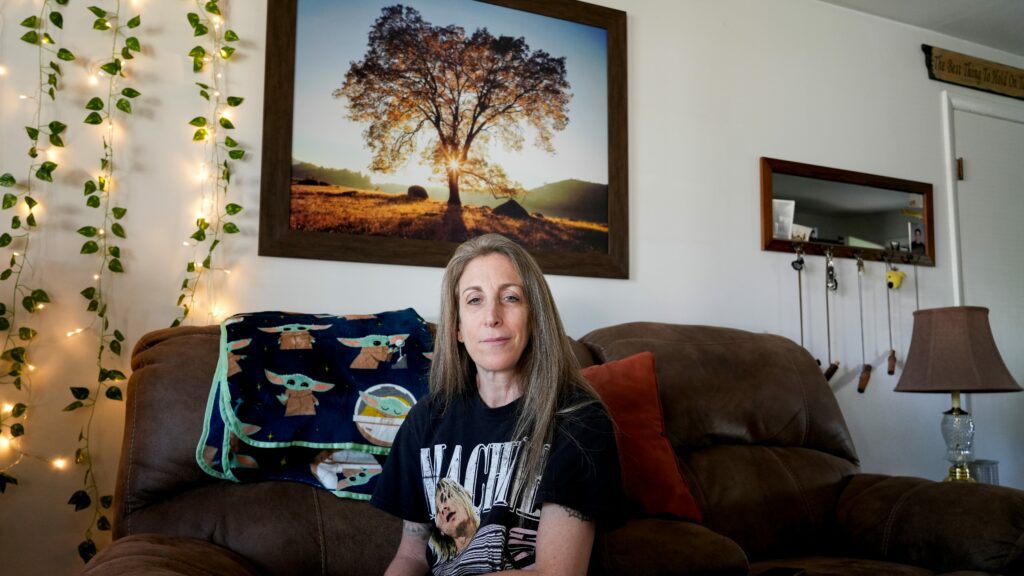
Ohio woman shares thoughts and concerns on medical marijuana program
Lorrie Prince-Callahan is a medical marijuana patient and advocates for other patients in Ohio. In this interview she shares briefly her thoughts on the medical programs current state and her own experience with medical marijuana.
Andrew Hopkins wakes up every day with a dull pain in his back.
He injured it nearly three years ago on the job for FedEx, winding up with two herniated discs after he lifted some tractor parts. The pain was brutal at the beginning: Doctors prescribed him Percocet, and he visited the emergency room on several occasions.
By the time Hopkins moved from Kentucky to Blanchester – a village outside Cincinnati – the pain had developed into a persistent soreness, coupled with the onset of arthritis in his spine. He took ibuprofen to get through the workday. Then a friend recommended he try cannabis; after all, medical marijuana is legal in Ohio.
Now, Hopkins said, he’s traded video games for hiking and disc golf.
“I feel like that has really helped take that pain away from me – that normal dull soreness I was having,” Hopkins said. “I was very inactive at the time, and I really feel like when I started smoking, it got me to the point where I was able to get out of bed and move around my house and not be so depressed.”
More: What you need to know as Ohio prepares to launch recreational marijuana sales
Hopkins secured his medical marijuana card almost a year ago, just months before Ohioans voted to legalize recreational marijuana. State regulators say patients like him will remain a priority in this new world of cannabis, even as businesses excitedly prepare for a new, more lucrative clientele of users 21 and older.
But longtime patients in the medical program – which had its share of headaches even before recreational entered the picture – worry their local dispensaries will leave them behind. And they need only look to other states for evidence of dwindling medical markets.
“We’re all scared about recreational, to be honest,” said Lorrie Callahan, a Dayton-area advocate who manages her multiple sclerosis with cannabis.
Ohio medical marijuana program already faced challenges
Ohio first legalized medical marijuana in 2016, but it took almost three years for sales to get up and running.
The complaints quickly followed. Patients thought products were too expensive and reported driving long distances to find products or deals. Some didn’t want to pay the cost – in time and money – of getting a medical card and recommendation from a physician. The program also faced legal trouble: A court ruled in 2018 that a “racial quota” for awarding licenses to businesses was unconstitutional.
Attitudes about the medical program have improved in recent years despite the bumpy start, according to research from the Drug Enforcement and Policy Center at Ohio State University. The center’s 2022 study marked the first time Ohio patients were more satisfied than not. The number of patients with an active recommendation and active registration increased 18.2% from June 2022 to June 2023.
Hopkins said it was so easy to get his medical card, “it almost didn’t feel real.” But the cost and bureaucracy has driven many Ohioans – including registered patients – out of state for cheaper marijuana.
“A majority of the patients in my network are still driving to Michigan,” Callahan said. “It’s not going to change once recreational hits.”
Declining patient participation left cannabis operators to contend with a product oversupply. Meanwhile, the biggest players in Ohio’s industry turned their attention to legalizing recreational and bankrolled the campaign for a law that benefits them the most.
“A heck of a lot of the folks who came into and helped to start Ohio’s medical marijuana universe, they looked at it as just the first step to being a recreational state,” said Doug Berman, executive director of Ohio State’s drug policy center.
Will patients turn to recreational marijuana?
What Ohio’s adult-use program means for medical consumers remains to be seen. But Berman believes the convenience could incentivize people to drop the program altogether.
After all, it happened in other states.
In 2018 people left Oregon’s medical program when recreational marijuana became available, the Associated Press reported. In Michigan, the number of registered patients sat around 101,000 as of May, compared to more than 268,000 at the end of 2019, according to the state’s Cannabis Regulatory Agency. Michigan voters approved the adult-use marijuana program in 2018.
While the cost of recreational products will be higher in Ohio − they come with a 10% excise tax − a consumer doesn’t have to go through a more rigorous process than just picking up marijuana at a dispensary. The medical program also requires participants to have one of 26 qualifying conditions confirmed by a doctor who is licensed to recommend cannabis.
Efforts to allow physicians to recommend cannabis for any condition they deem appropriate have stalled in the state Legislature.
“When you have that, you signal to people, hey, if you’re just using it for sleep or for anxiety or something else that may or may not be covered, it’s just easier to go pick it up at the rec store, even though it’s next to the medical store,” Berman said.
But in Colorado, where medical marijuana, in 2000, and recreational marijuana, in 2012, were both first legalized in the United States, the state-regulated programs coexist peacefully, according to Jordan Wellington, an attorney specializing in cannabis law.
“Twelve years in, we certainly have not reached a point where we feel as though the medical program isn’t necessary or shouldn’t exist, and there are many, many patients who find it to be critical for their life,” Wellington said.
There’s a multitude of reasons why someone may decide to stay within a medical system even if recreational is available, Wellington explained, like a parent who purchases it for their child’s epilepsy − something they couldn’t do with adult-use marijuana.
Medical marijuana can also provide a safety net for those in the criminal justice system. For example, Berman said, someone instructed by a judge not to use alcohol or drugs could still consume cannabis if they have a medical marijuana card.
“From a variety of legal perspectives, both formal and informal, having the ‘this is my medicine’ rather than ‘this is my recreation’ can be really important,” he said.
How Ohio is supporting medical marijuana program
The state is creating its own incentives for people to stick with the medical marijuana program.
The Division of Cannabis Control scrapped the annual patient and caregiver fees that previously cost Ohioans $50 and $25, respectively. Regulators are also drafting rules to require dispensaries to provide any discounts they offer to medical marijuana patients, spokesman Jamie Crawford said.
Existing medical dispensaries that apply for dual-use licenses to sell recreational must maintain enough supply for patients. Before they get the go-ahead to open for adult-use customers, the businesses must prove they can properly sell products to both consumer populations.
“Their No. 1 priority is to preserve a robust medical marijuana program for Ohioans who are relying on it,” said Pete Nischt, vice president of compliance and communications for Klutch Cannabis. “The fact that they’re committed to that at the outset is different from a lot of other states.”
Klutch plans to create express check-in and checkout lanes for patients who want to avoid lines of recreational users. And the company’s Canton dispensary just recently got approval to make curbside pickup available to medical consumers.
But some patients are skeptical and have flocked to social media to vent about sudden price increases at their local dispensaries − a phenomenon Nischt didn’t dispute.
“The volatility we’re seeing in the market is exactly the same as what we’ve seen in virtually every other market that’s gone through this transition,” he said.
Hopkins, the Blanchester patient, hopes to keep his medical card but isn’t sure how recreational will affect his experience at the dispensary. He doesn’t want to wait an hour for a shopping trip that usually takes 10 minutes tops, he said.
It’s also legal now for Ohioans to grow their own cannabis at home, something Callahan said patients may take advantage of.
Then there are people like Rhonda Agard, of Maumee, who’s been traveling to Michigan the whole time − and she doesn’t plan to stop now.
“I don’t even fool with the state of Ohio,” Agard said. “I’ll drive thirty minutes. That’s sad because Ohio is missing out on so much.”
Haley BeMiller is a reporter for the USA TODAY Network Ohio Bureau, which serves the Columbus Dispatch, Cincinnati Enquirer, Akron Beacon Journal and 18 other affiliated news organizations across Ohio.
Samantha Hendrickson is the Columbus Dispatch’s medical business and healthcare reporter. She can be reached at shendrickson@dispatch.com.
Source link : http://www.bing.com/news/apiclick.aspx?ref=FexRss&aid=&tid=66b6dcd1c54d4be1941b321dd9bf0eca&url=https%3A%2F%2Fwww.freep.com%2Fstory%2Fnews%2Fstate%2F2024%2F07%2F20%2Fpatients-fear-ohio-recreational-marijuana-will-impact-medical-cannabis%2F73989968007%2F&c=8851931311970638121&mkt=en-us
Author :
Publish date : 2024-08-09 11:34:00
Copyright for syndicated content belongs to the linked Source.
